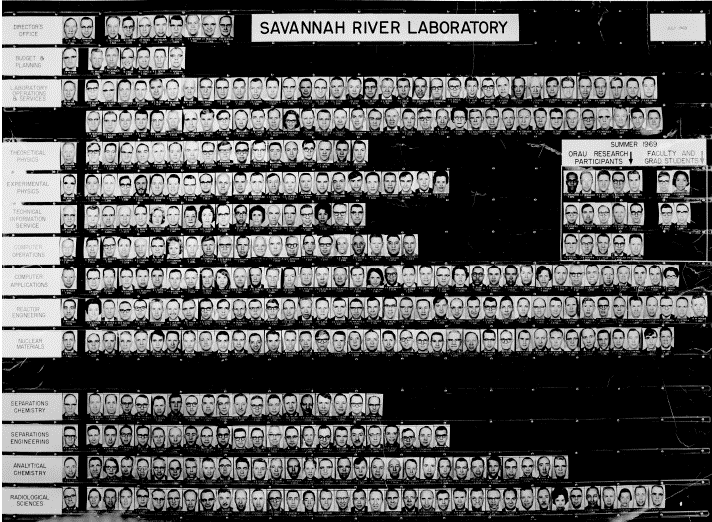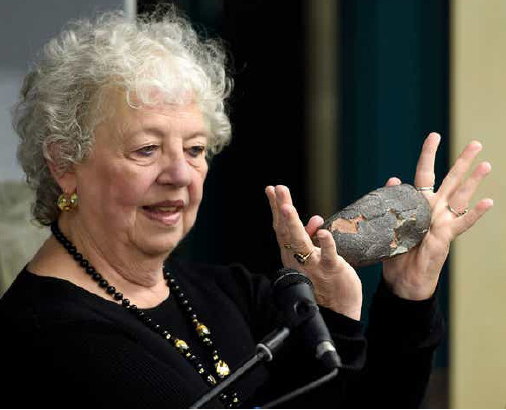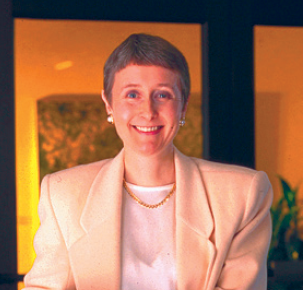SRNL Celebrates National Women’s History Month
Savannah River National Laboratory’s (SRNL’s) roots date back to the early 1950s as Savannah River Laboratory (SRL). Career opportunities for women were limited in SRL’s first few decades. Roles were largely confined to clerical, administrative, and laboratory technician positions. Through grit and determination, women began to break down barriers and advance their careers. Several courageous women of note led the way.
Babb Attaway, a native of nearby Jackson, South Carolina, came to SRL in the late 1970s. She worked in various clerical jobs for a few years before she transitioned to a lab tech position. Eventually Attaway learned about openings in the Shielded Cells, which were known then as the High Level Caves. It was challenging work, dealing with radiological material and wearing a respirator all day long.
Her manager dissuaded her from continuing in the position, but she was undeterred. Her can-do attitude paid off, as Attaway ultimately became the operations manager in the Shielded Cells, a position she held for many years.

A composite photo for SRL from the late 1960s shows few women overall and virtually none in prominent positions (image from Hot Labs/Cold War, 2022)
Carol Jantzen completed her Ph.D. in the 1970s in materials science and engineering at Queens College in New York. Her technical emphasis was glass chemistry. She completed a post-doc in Scotland and returned to the U.S. in 1979.
SNL hired her in a lead scientific role in 1981, which was still rare for women at the time. Jantzen proved it was a wise move by SRL, as she played a huge role in developing the innovative glass chemistry for the Defense Waste Processing Facility (DWPF).
As time passed, SRL hired more women in prominent science and engineering roles. Yet as SRL evolved into the Savannah River Technology Center (SRTC) in the early 1990s, there were still few women in upper level leadership.

Carol Jantzen played a pivotal role in designing the glass chemistry for DWPF (image from Hot Labs/Cold War, 2022).
This changed in 1992, when Susan Wood was installed as the lab’s first female director. Wood was born in the U.K. and emigrated to the U.S. in 1969. She earned her Ph.D. at the University of Pittsburgh in 1976, and soon after became a Westinghouse career person.
When Mario Fiori, then SRS site manager, encouraged Westinghouse to look for a female lab director, Wood’s name came to the forefront. She served as SRTC director for a decade and was instrumental in the push to become a national laboratory.
In 2024, as SRNL celebrates its 20th anniversary as a national lab, there are more than 400 female employees. Both deputy directors and two of three associate lab directors are women, as are the directors of several mission support departments.
The lab boasts dozens of female scientists, researchers and engineers that are among the most accomplished in the national laboratory complex, with several known globally for their work. As we look to the future, SRNL proudly strives to be the professional home of choice for the country’s most capable and talented women.

In 1992 Susan Wood became the first female director at SRNL, then known as SRTC (image from Hot Labs/Cold War, 2022).
So, a good friend of mine, Jackie Miller, and I went to the high-level caves in 773-A, E Wing, and took lab tech positions over there. And, you know, it was respirator work, it was operating the manipulators, running the remote cranes, all those sorts of things. And when we first got there, I mean, it was mostly men. This was ’82, ’83, whenever, around that time. They had had a few women that had worked in the cells before, but there was one of the managers [that] actually called us, Jackie and I together, in his office and politely as he could, indicated that this really wasn’t necessarily a place for a lady. And we [needed] to really think hard about what we wanted to do, which made me even more determined that’s what I was going to do. But it worked out great. It was a bunch of guys, but they were very nice to us, and we worked. You know, we showed them that we’ll strap on that respirator and we’ll go work just like the rest of you do. And my supervisors were fantastic. And I’m still there. I’m the operations manager in the shielded cells this many years later.
Babb Attaway, first female operations director of the Shielded Cells, describes her arrival at the facility.
There were two technical women in all of SRNL. Jesse Smith I think was her maiden name. And Elizabeth Bowman. And they were both in the analytic division. And they asked me if I wanted to talk to another woman. And they set up an interview with Jesse. And, she said it was a good place to work, that women were treated even-handedly. But there was only her and Liz. I mean other than technicians and in the technical ladder she and Liz Bowman were the only two in the technical ladder. So, and there was only one ladies room ln the whole building. They had, as they got more women, the had to change more of the men’s rooms into, into ladies rooms. And it was, it was rather interesting. Some of the male technicians didn’t want to work for a female researcher. But for the most part, when I did get here I really didn’t feel awkward or I didn’t feel out of place. Obviously I accepted the job. As I said, I had offers from Rockwell International Science Center to go back there. I had one from Stanford Research Institute, and I had one from Savannah River.
Carol Jantzen discusses coming to the lab as a lead scientist in the early 1980s.
I was certainly the first female PhD in my department, and I was actually the first distinguished alumna of the engineering school at the University of Pittsburgh. It [Westinghouse] was all male of course. I might have been their first female PhD, as a matter of fact, if not the first, close to it. There weren’t many women. But you know when you’re in research it’s what you’re capable of doing that counts. And really people don’t pay much attention to the fact that you’re male or female or black, white, pink, green or whatever you are. They, they look at what you do, what can you accomplish. So I have to say I worked hard. I was scared to death when I first got there. Well it was capability, which I no recognize I’ve had since I was a kid. I was born with it. And after only about four or five years I became a group leader. I was really pushed hard once I got there. And it was the beginning of the real EEO drive in this country for getting women into different jobs and enabling women up the corporate ladder and that kind of thing.
Susan Wood describes her career’s ascent.